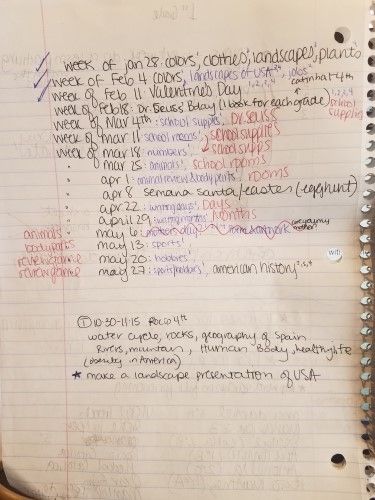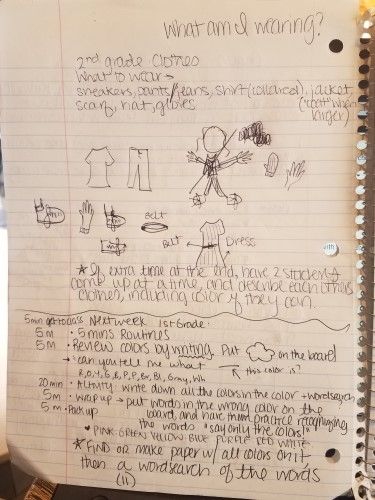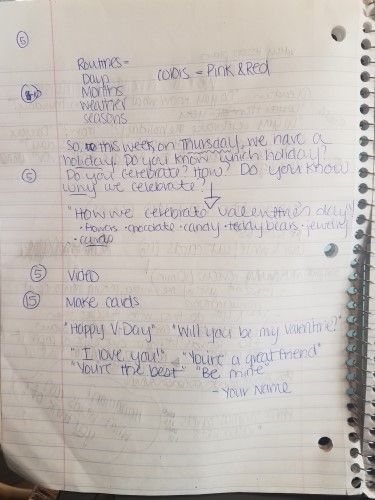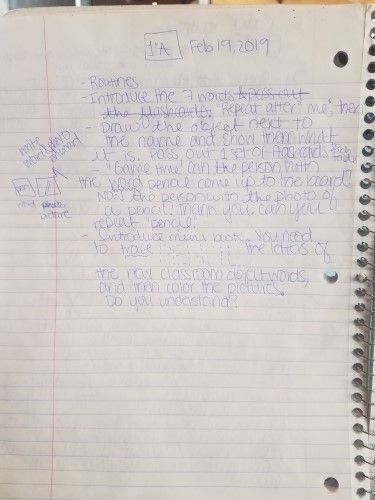Using TEFL to Lesson Plan
Lesson planning as a teacher is a gamble. You research, practice your presentation to a mirror or a wall, prepare your prompting questions for brainstorms, print out hundreds of handouts, and don’t know until you’re in front of your students if your lesson is successful. Over the years, you hone your lessons, presentations, and develop reliable standbys for lesson plan structures. Year One is a little more difficult.
During our initial CIEE teachers’ orientation in Seville, many participants were teachers in the United States. They have Master’s degrees, and lesson prep in their sleep. Day 1 they brought their experiences and tricks for keeping students engaged and on-task. I was different, but no less excited to dive in.
As an auxiliar de conversacion in Spain, this is my first year teaching. Coming in late in the year (January) I didn’t get a chance to evaluate the levels of Spanish before I started developing lessons, as I only teach some courses once a week. I teach 14 different classes each week, across four levels of English comprehension. In the beginning, I had to guess at what students would be able to understand, and relied on their feedback. One reason children are great is because if something is too easy, or too hard, they’ll all whine it at you.
Over time I learned what to expect from different types of lessons, from each of my classes, and have this wisdom to share.
What TEFL taught me:
1. How to structure the different parts of my class, including the warm-up, introduction, the activity, the warm down, etc. It also taught how much time to allot for these and what they should entail. I cannot speak to how important this information has been for teaching effective yet fast lessons to elementary schoolers. Before finalizing a lesson plan, I know exactly how long each part will take, and what skills I’m sharpening.
2. Mix up which skills you develop each class. As I’ve mentioned before, the certification dives into how to sharpen writing, speaking, reading, and listening skills. My teachers here don’t often have a preference for what we practice, so it’s up to me to mix these up as often as possible to round out their learning. I never would have thought about this without the certification. However, it’s true that there are many students who speak a second language are stronger readers than speakers because their school didn’t prioritize conversations.
3. Think about each type of learner when planning (visual, auditory, interpersonal, intrapersonal)
4. Always have a Lesson Plan B
5. Always have more activities for the students who finish first. This has been instrumental. Each class might have three or four students who finish and are now bored with the task at hand. Keep two or three fun puzzles on hand related to what you are learning, or have already learned for review. I’ve found word searches, crosswords, and fill in the blanks to be exceptional at passing that extra time.
What I learned over time:
1. Plan multiple weeks out. With one of my teachers, she let me take over the entire class for the entire six months and teach whatever I wanted, so I handed her a six month framework to edit. Now there’s total transparency and less to stress about. Pictured: my master plan

2. If you can’t plan weeks out, at least have all of your plans made, and copies printed by Friday of the week before. I repeat, by Friday of the week before. There might be 50 teachers vying for one copier come Monday.

3. You have to be straight with teachers. If something isn’t working as well as it could, be honest even if it’s awkward. It might be “their class”, but you’re the English expert and there for a limited time.
4. Using internet videos is a great tool, but schools aren’t build on a strong internet connection.
5. Ask the teachers for visual aids- diagrams, videos, or books to help with your lessons. They may have taught the same topic before at a different school
6. Ask for a library card
7. Classes are going to be loud, ill-behaved, or shortened sometimes, that’s school. Don’t be rigid with your lesson plan, and get the information across as best you can with what you’re given.
Here are some examples of lesson plans I’ve written (proof it doesn’t have to be formal) and activities I’ve used to teach the information. To date we’ve covered clothes, colors, school rooms, school objects, families, physical descriptions, the five senses, natural landscapes, world geography, Spanish geography, the water cycle, machines, Valentine’s Day, Dr. Seuss, Easter, and more. I’ve learned so much about these topics, and the diversity keeps you excited nearly constantly.





Pro Tip: Use Pete the Cat for 1st and 2nd graders if you teach them